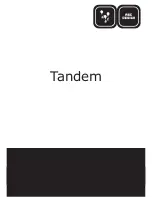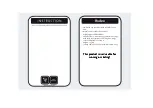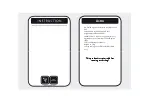
65
Single Channel Stepper Motor Controller
F.2
Positioning a Stage
F.2.1 General
Whenever a command is received to move a stage, the movement is specified in
motion units, (e.g. mi llimetres). This motion unit value is con verted to microsteps
before it is sent to the stage. If operating the unit by the front panel (local mode) this
conversion is performed in ternally by the controller. If operating via a PC (re mote
mode) then the conversion is performed by the APT software.
Each motor in the system has an associated electronic counter in the controller, which
keeps a record of the net number of microsteps moved. If a re quest is received to
report the position, the value of this counter is converted back into motion units.
F.2.2 Home position
When the system is powered up, the position counters in the controller are all set to
zero and consequently, the system has no way of knowing the position of the stage
in relation to any physical datum.
A datum can be established by sending all the motors to their ‘Home’ positions. The
‘Home’ position is set during manufacture and is determined by driving the motor until
the negative limit switch is reached and then driving positively a fixed distance (zero
offset). When at th e Home p osition, the counters are reset to zero there
by
establishing a fixed datum that can be found even after the system has been switched
off.
See Section 4.3. for details on performing a Home move.
F.2.3 Limit Switches
A linear stage moves b etween two stops, and movement outside these limits is
physically impossible. Linear stages can include stages that control the ang le of a
platform within a certain range, although the movement of the platform is not really
linear but angular. Rotary stages can rotate indefinitely, like a wheel.
Linear and rotary stages both contain microswitches that detect certain positions of
the stage, but they differ in the way these switches are used.
All linear stages have a –ve limit switch, to prevent the stage from accidentally being
moved too far in the –ve direction. Once this switch is activated, movement stops. The
switch also provides a physical datum used to find the Home position. Some linear
stages and actuators also have a +ve limit switch , whereas others rely on a physical
stop to halt the motion in the positive direction. A rotary stage has only one switch,








































